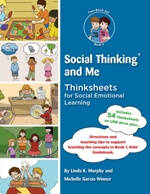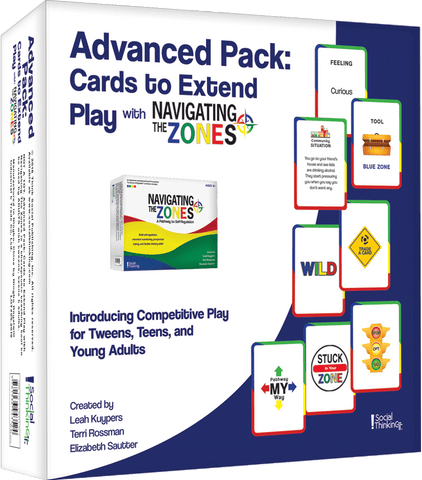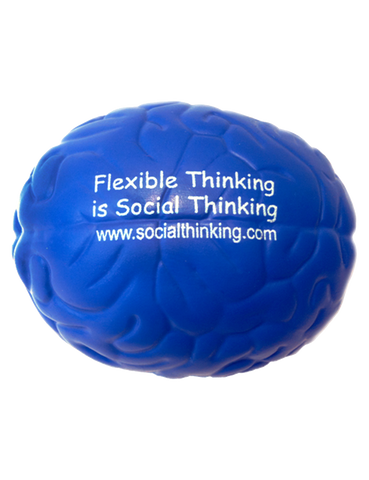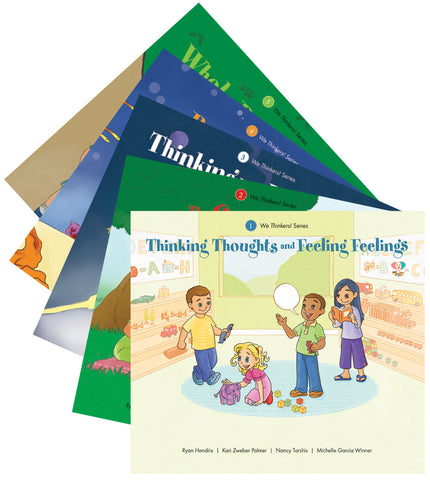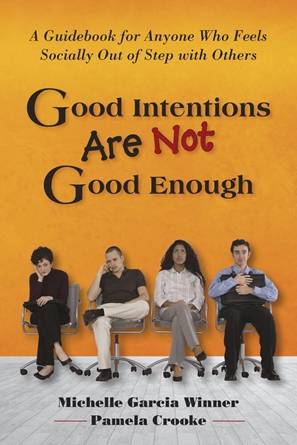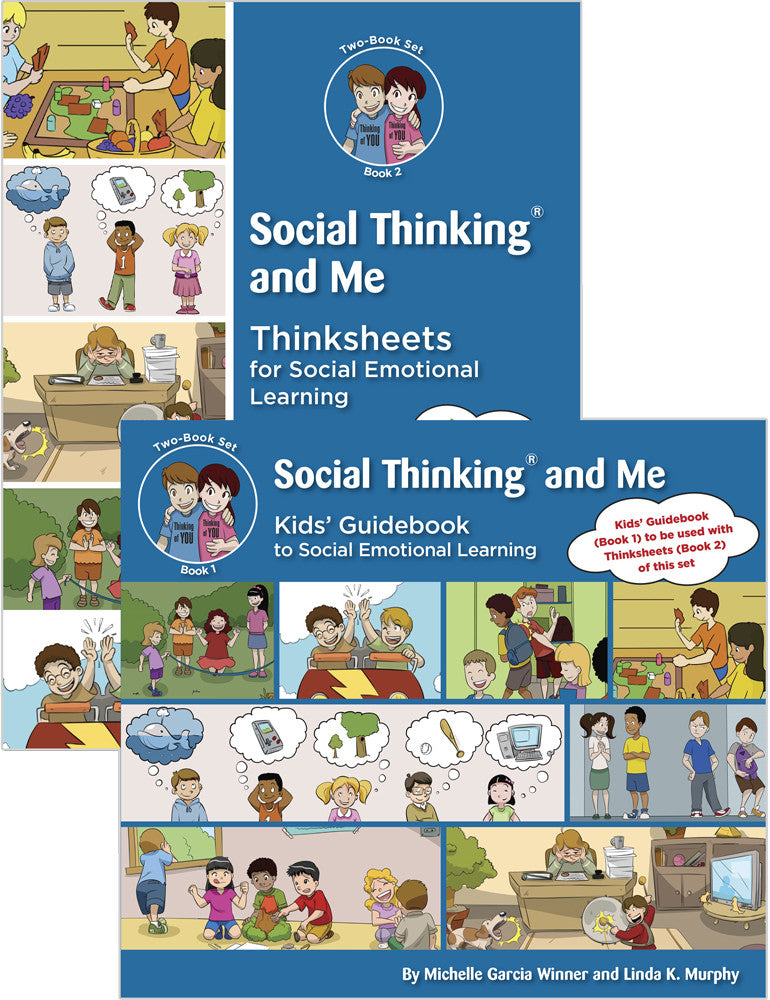
Social Thinking and Me (Two-Book Set)
Social Thinking and Me is a powerhouse of social knowledge to help children in upper elementary and middle school transition into the more socially-complex and socially-demanding older grades and become stronger social problem solvers. Whether it is thinking about hidden rules and expected behavior, developing a deeper understanding of your emotions and how you influence the emotions of others, or comparing the size of your reaction to the size of the problem, this two-book set breaks larger and more complicated social concepts down into smaller chunks to make it easier for adults to teach and kids to learn. It gives teachers, administrators, students, and parents a common language to more easily discuss social strengths and weaknesses – and therefore is a natural fit for the classroom (mainstream and special needs), clinic, and home environment!
Who should use Social Thinking and Me?
No prior knowledge of Social Thinking is needed to use Social Thinking and Me. Whether you and your students are familiar with the Social Thinking Methodology or are just getting started, you will find this curriculum easy to use and educational! Social Thinking and Me is designed for adults (teachers, clinicians, parents, etc.) to learn from while they’re teaching the two books so that kids and adults can engage in the thinking process together. This is a curriculum to be used by all stakeholders on the child’s team to ensure that everyone is on the same page with the concepts taught and learning is carried over into all environments.
Social Thinking and Me is a multifaceted curriculum that can be used by teachers in mainstream, inclusion, or special needs classrooms, and by therapists in individual or small groups. Though the curriculum is designed for students with social learning challenges, all individuals, whether or not they have a diagnosis, can benefit from learning about Social Thinking concepts. Social Thinking Vocabulary provide fundamental thinking skills that align with Common Core and state standards in the U.S. and educational standards in countries around the world. Social Thinking and Me fits well into any school working to establish a culture of caring and kindness through social and emotional learning (SEL) and/or Positive Behavioral Interventions and Supports (PBIS) as part of its over-arching school-wide goals. Social Thinking and Me was created to support your students’ academic and social learning needs!
Social Thinking and Me is an invaluable tool for parents too, either to supplement what the child is learning at school or in treatment, or by itself as a resource to strengthen a child’s social competencies. Parents who homeschool their children will find Social Thinking and Me integral to teaching children about their social selves and essential skills such as perspective taking, self-awareness, self-regulation, understanding the “big picture”, expected/unexpected behavior – the list goes on!
What's in the Two-Book Set?
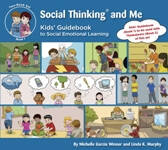
In the first book in Social Thinking and Me, Kids' Guidebook for Social Emotional Learning, kids are introduced to Social Thinking Vocabulary and concepts that help them figure out what’s “expected” in different social contexts. Additionally, strategies are taught to give kids the tools needed to solve social problems. Concepts are explained using age-relevant social situations, cool illustrated pictures, and lots of group discussions that can aid each student on their journey to becoming a better social thinker. At the end of each chapter in book 1, expand and personalize the lesson by using the related thinksheets found in book 2!
The Kids’ Guidebook is not meant to be read all at once, as many of the concepts/units take time to learn and work through. And even though it’s written in language that’s kid-friendly, the book is meant to be read and worked through first with an adult. Once the initial review has been completed and children are familiar with the concepts introduced in each chapter, they can revisit chapters or read them on their own. The language explored in each chapter can then be used in the classroom, home and community to help kids self-monitor and self-regulate their social selves based on what they are figuring out about the situation and the people around them!
Chapters cover essential Social Thinking concepts including:
- What is Social Thinking
- Social Thinking = Flexible Thinking
- We All Have Feelings
- Thinking With Your Eyes
- Thinking About the Hidden Rules and Expected Behaviour
- Keeping my Body, Eyes, Ears, and Brain in the Group
- Thinking of Others vs Just Me
- How Big is My Problem?
- Thinking About My Reaction Size
- Doing An Activity or Just Hanging Out
In response to your many requests: we are now providing the ability to buy the Kids' Guidebook individually to allow each child to have his or her own book! See "Social Thinking and Me (The Kids' Guidebook for Social Emotional Learning)."
Book 2: Thinksheets
The second book in Social Thinking and Me, Thinksheets for Social Emotional Learning, offers 54 fun and instructive "thinksheets" (or mini-lesson plans) that expand on the concepts taught in the Kids’ Guidebook. Each thinksheet supports a specific chapter from the Guidebook and helps kids learn how the concepts relate to them in their everyday experiences. There are between three to nine thinksheets per chapter to encourage conversation and provide the practice kids need to deeply understand the concepts in order to apply them in their lives. Thinksheets for Social Emotional Learning also provides comprehensive instructions to adults on how to effectively use the two books as a curriculum.
Topics include:
- An introduction to Social Thinking
- Why it’s important in helping children learn to think about and navigate social situations
- The social-academic connection
- How to teach the concepts and chapters
- A glossary of the Social Thinking Vocabulary
- Letter to parents/caregivers that educators can use
- Thinksheets supporting each chapter of the Kid's Guidebook
Teaching pathways: How Social Thinking and Me pairs with other products
This two-book set can stand on its own to teach the Social Thinking Methodology to all students ages 9-13 as part of a school-wide Positive Behavioral Interventions and Support (PBIS) initiative. It also pairs beautifully with other Social Thinking books and games for that age range.
Using our Superflex™ Curriculum with your 3rd – 5th graders? Social Thinking and Me is a perfect “next step” as kids age up and out of Superflex. Jump right in to keep students learning about Social Thinking concepts and deepen their understanding of working in a group, hanging out with friends, figuring out expected/unexpected behavior, and social problem solving. When using You Are a Social Detective, the Superflex Curriculum and Social Thinking and Me in sequence, you have a scope and sequence of helping students learn about themselves and others, all while learning to self-regulate their own behavior.
If kids are older and new to Social Thinking, you can start with Social Thinking and Me and then move into books and products for our middle school population, including Social Fortune or Social Fate and our fun educational game that builds perspective-taking skills, Should I or Shouldn’t I? Middle/High School Edition.
How is “Social Emotional Learning” different than the Social Thinking Methodology?
The two books that comprise Social Thinking and Me contain “Social Emotional Learning” in their titles. Social and emotional learning (SEL) is a concept of vital importance to the holistic functioning of an individual, and it is rapidly gaining attention in the field of education. The Collaborative for Academic, Social, and Emotional Learning (CASEL) defines SEL as “the process through which children and adults acquire and effectively apply the knowledge, attitudes, and skills necessary to understand and manage emotions, set and achieve positive goals, feel and show empathy for others, establish and maintain positive relationships, and make responsible decisions.”
Social Thinking is a methodology that teaches the thinking skills required to adequately engage in SEL. The concepts and strategies that make up the Social Thinking Methodology help individuals develop the five core abilities that are at the heart of SEL: self-awareness, self-management, social awareness, relationship skills, and responsible decision-making. Learn more about SEL at www.casel.org.
